Affiliate links on Android Authority may earn us a commission. Learn more.
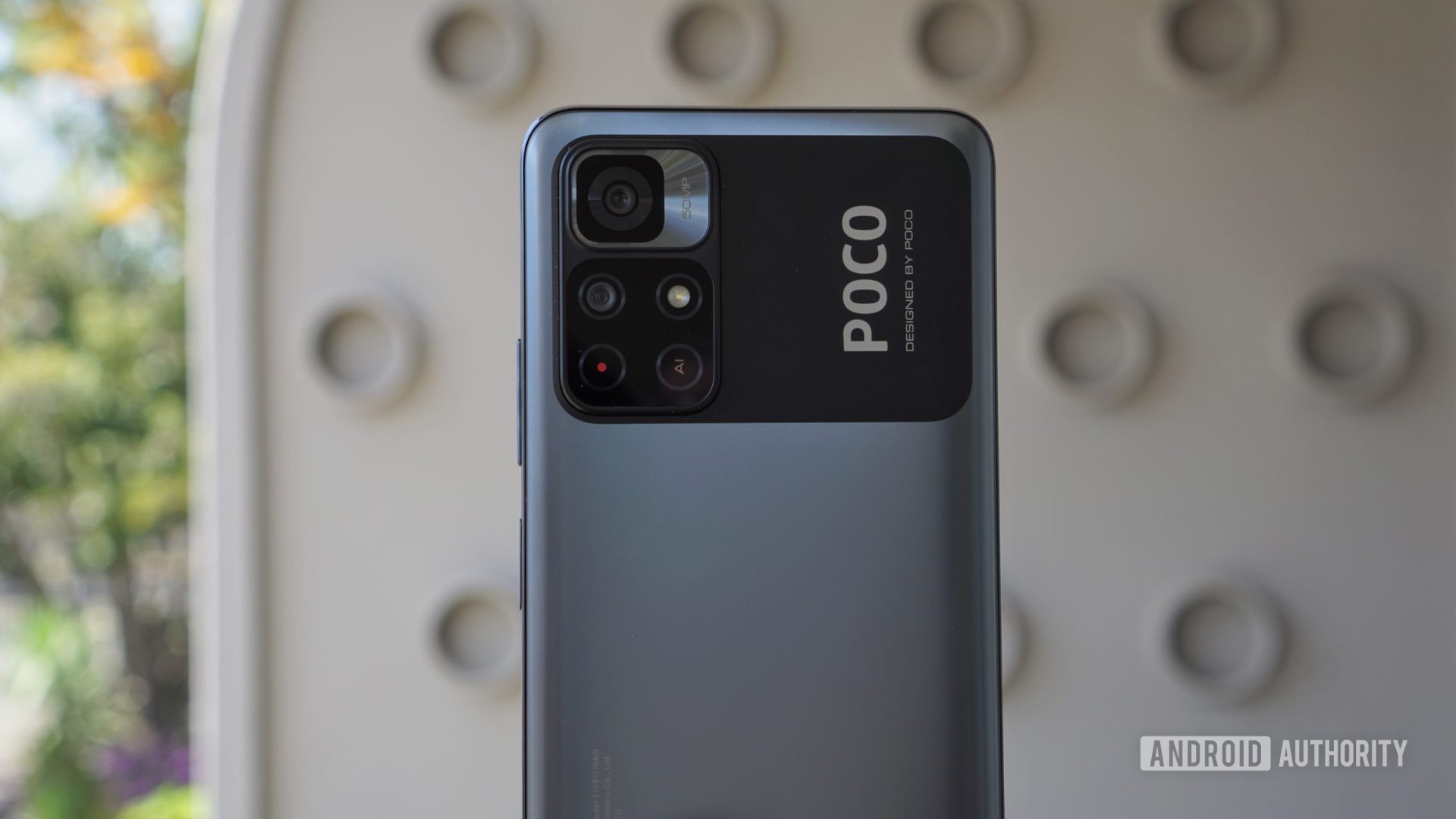
POCO M4 Pro review: An affordable 5G phone with a few extra perks
Published onNovember 17, 2021
Poco M4 Pro
MSRP:
What we like
What we don't like
Poco M4 Pro
The POCO M series has earned a reputation in a short time for delivering some of the best budget phones on the market. Sure, these phones are often rebranded versions of Redmi devices, but you still tend to get good value for money. And phones like the POCO M3 and M3 Pro showed that the company can offer unique designs in this segment too. That (sort of) continues with the POCO M4 Pro, but is this a major upgrade or should you look elsewhere? That’s what we’ll find out in this POCO M4 Pro review.
What you need to know about the POCO M4 Pro
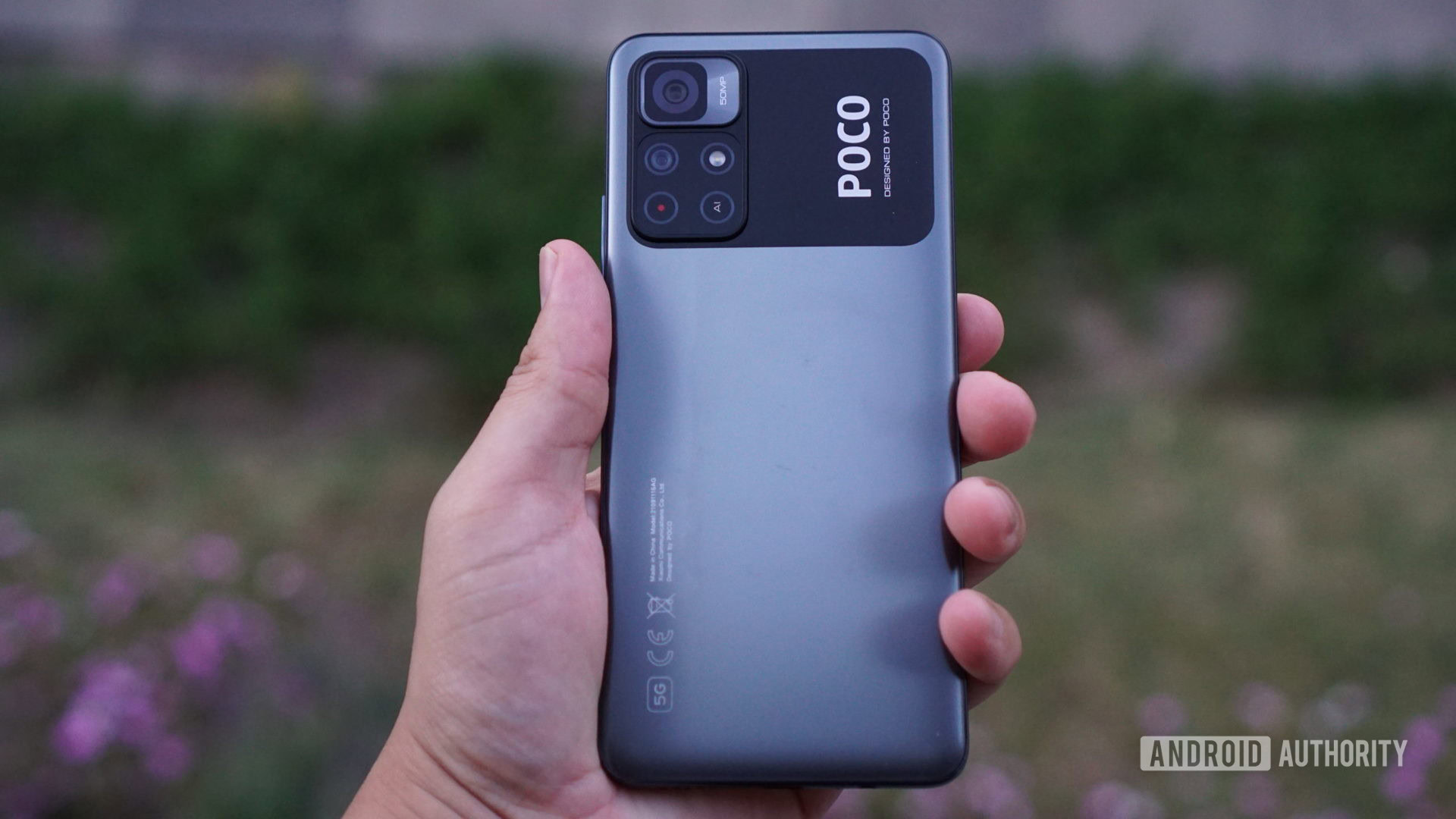
- POCO M4 Pro (4GB/64GB) EU: €229 (~$263)
- POCO M4 Pro (6GB/128GB) EU: €249 (~$286)
The latest POCO phone is a lower mid-range offering in the sub-€250 segment, sitting above the entry-level POCO C series but below the more premium POCO F and X ranges. That means it’s in the same stacked playing field as volume-shifting devices like the Samsung Galaxy A22 5G, OPPO A54 5G, and the realme Narzo 30 5G. And much like these devices, it’s packing 5G connectivity on a budget, too.
It has a pretty competitive spec sheet on paper for an affordable price, but if the specs look a little familiar, that’s because it’s a Redmi Note 11 (currently China-only) with a slightly adapted design to add some POCO-flavor.
Related: The best phones under £300
The device launched in Europe in 4GB/64GB and 6GB/128GB flavors on November 11. There’s no word yet on if the phone will reach other regular markets for POCO such as India. We also don’t have official pricing for the UK just yet.
The POCO M4 Pro is available in Power Black (tested), POCO Yellow, and Cool Blue color options and will be sold via POCO’s website, AliExpress, Goboo, and Shopee.
What’s good?
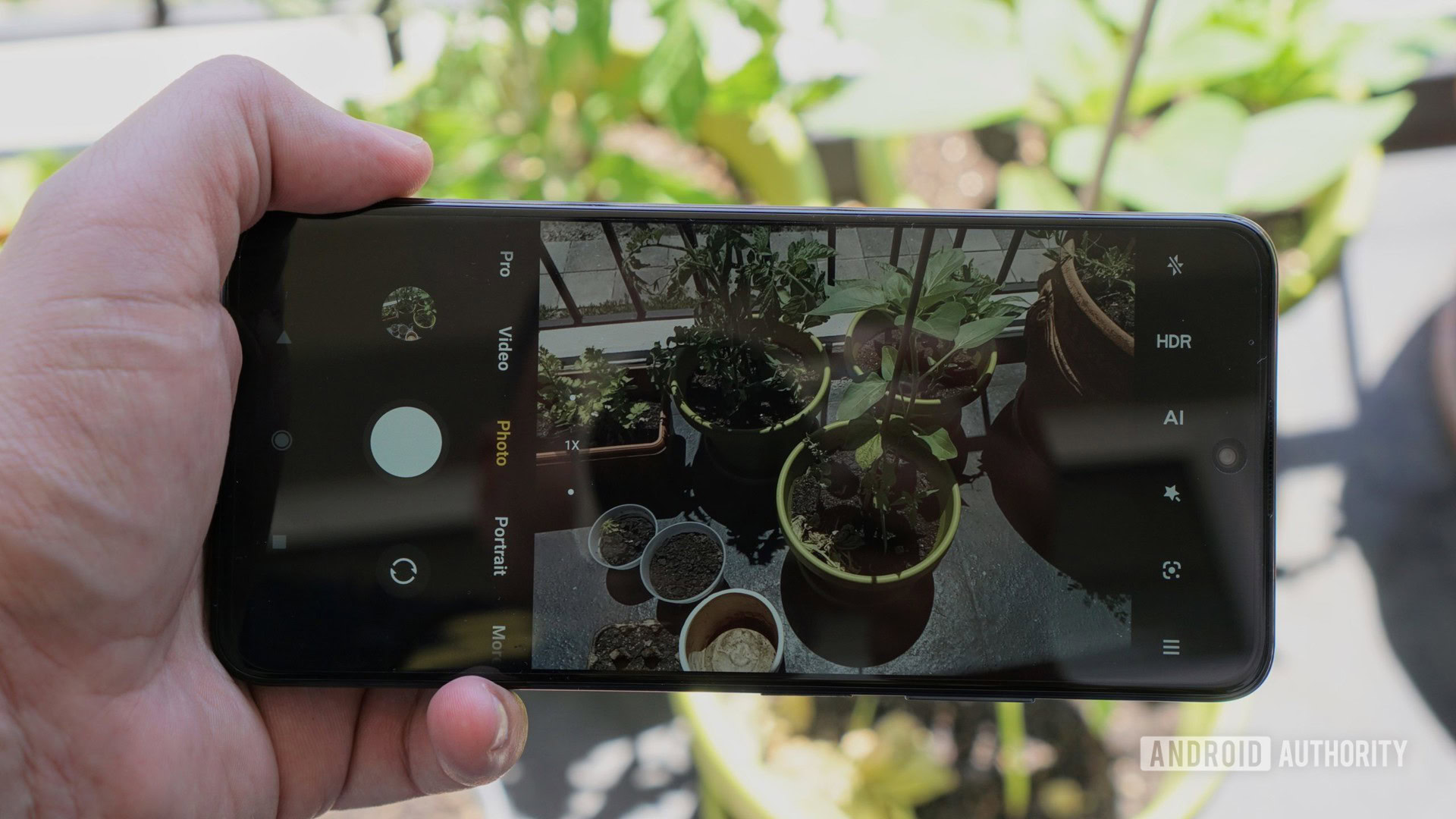
The POCO M4 Pro has plenty of upsides to it, starting with the design. The rear cover and edges definitely look and feel like plastic, but the color scheme and camera window combine to deliver a design that punches above its weight. In saying so, that camera window isn’t a distinct piece of plastic but rather part of the rear cover that’s just been “painted” black. It’s also worth noting that the rear cover does attract fingerprint grease, but the prints aren’t super visible (at least they weren’t on my Power Black review unit).
The phone is a little heavier than its predecessor but it balances this weight very well, and extended one-handed use (e.g. reading in bed) wasn’t a problem at all. Furthermore, POCO says you’re getting IP53 splash resistance here, which is a nice touch for a budget handset. It’s also protected by Gorilla Glass 3 on the front, which is fair for the price.
Poco’s M4 Pro isn’t a slouch in terms of I/O either, delivering an accurate and pretty fast side-mounted fingerprint scanner, a 3.5mm headphone jack, IR blaster, and dual speakers. When it comes to the latter, the top speaker only delivers a fraction of the volume compared to the bottom-firing speaker.
More reading: The smartphones with the best speakers
Another aspect I really liked about the POCO device was the amount of control you have in MIUI. The actual aesthetics are still very much a love-it-or-hate-it affair, but the software offers impressive scope for customizing how it behaves. For example, I didn’t like the segregated notification shade/quick toggle system in place here, requiring you to swipe down on the left side to view notifications and on the right side for quick settings. But MIUI lets you switch back to the old notification shade, which shows both quick settings and notifications in one place.
There are plenty of other examples too. Prefer a firm button press for the fingerprint scanner over a mere touch? You can toggle this behavior. Want to add a double-tap shortcut to the power button for Assistant, silent mode, or something else? That’s an option too. How about volume controls on a per-app basis? Yep, it’s here. I would’ve liked Xiaomi to offer more customization in terms of aesthetics, but what’s here is definitely good. While it’s a concern with some Redmi/POCO phones, the software on the model I tested didn’t have much in the way of in-UI ads (although I did spot them in the music app). If you do pick up the phone and find these ads, there’s a way to disable them.
Performance is pretty much what you’d expect for the price, as the phone’s Dimensity 810 chipset delivered solid performance when doing the basics like browsing the web, switching between apps, and using the camera. It also offered good performance in games like Nascar Heat Mobile, Call of Duty Mobile, and Genshin Impact. The latter is particularly demanding on any phone, but while there was some judder when turning the camera and in busier sections, we still got a fluid experience overall at low graphics, with a 30fps frame-cap. It’s also not the best for emulation either, as it can’t quite keep up with the likes of Dolphin and Citra. In other words, you should get the POCO X3 Pro instead if you value gaming performance, as the POCO M4 Pro isn’t going to cut it. But this is an understandable trade-off in this price segment.
Between the solid design, customizability of MIUI, and great endurance, the POCO M4 Pro has a lot going for it.
I was glad to see the POCO M4 Pro take a less is more approach to the rear cameras, ditching the two mostly redundant 2MP sensors seen on the POCO M3 Pro in favor of an 8MP ultra-wide shooter to accompany the main 50MP lens. POCO told us that it thought the ultra-wide camera was more versatile than 2MP sensors and we’re inclined to agree.
Staying with the camera, the 50MP main sensor does well enough during the day. Images are pleasantly saturated, there’s a good level of resolvable detail for cropping, and edges generally stayed well-defined. The camera isn’t without fault in broad daylight though, as dynamic range and noise can be a challenge (particularly in dark areas of the shot), and you’re not going to get very close to subjects. Then again, the 2x digital zoom option helps with the latter, delivering decent image quality or simply ensuring that the 1x version of the shot is in focus. You can check out some camera samples later in this POCO M4 Pro review.
Finally, the POCO M4 Pro manages to deliver some fantastic battery life. One period of usage granted me almost nine hours of screen-on time over two days, an impressive figure. The first day wasn’t super-heavy, but did consist of more than an hour of GPS navigation, music playback, using the camera for a few minutes, and browsing Reddit for a bit. Meanwhile, the second day saw me using the phone for Reddit, scrolling through Twitter, chatting on Telegram, web browsing, and some gaming (~35 minutes). You can definitely gain two days of usage or one and a half days with heavier use. That’s some great endurance right there.
As for recharging, POCO claims that the phone will reach 100% capacity in 59 minutes, but I never managed that. An hour of charging with the phone off took me to 90%, with the phone reaching 100% capacity in an hour and 12 minutes. That’s still a good figure for a budget phone, but it’s over 10 minutes more than POCO’s claim.
What’s not so good?
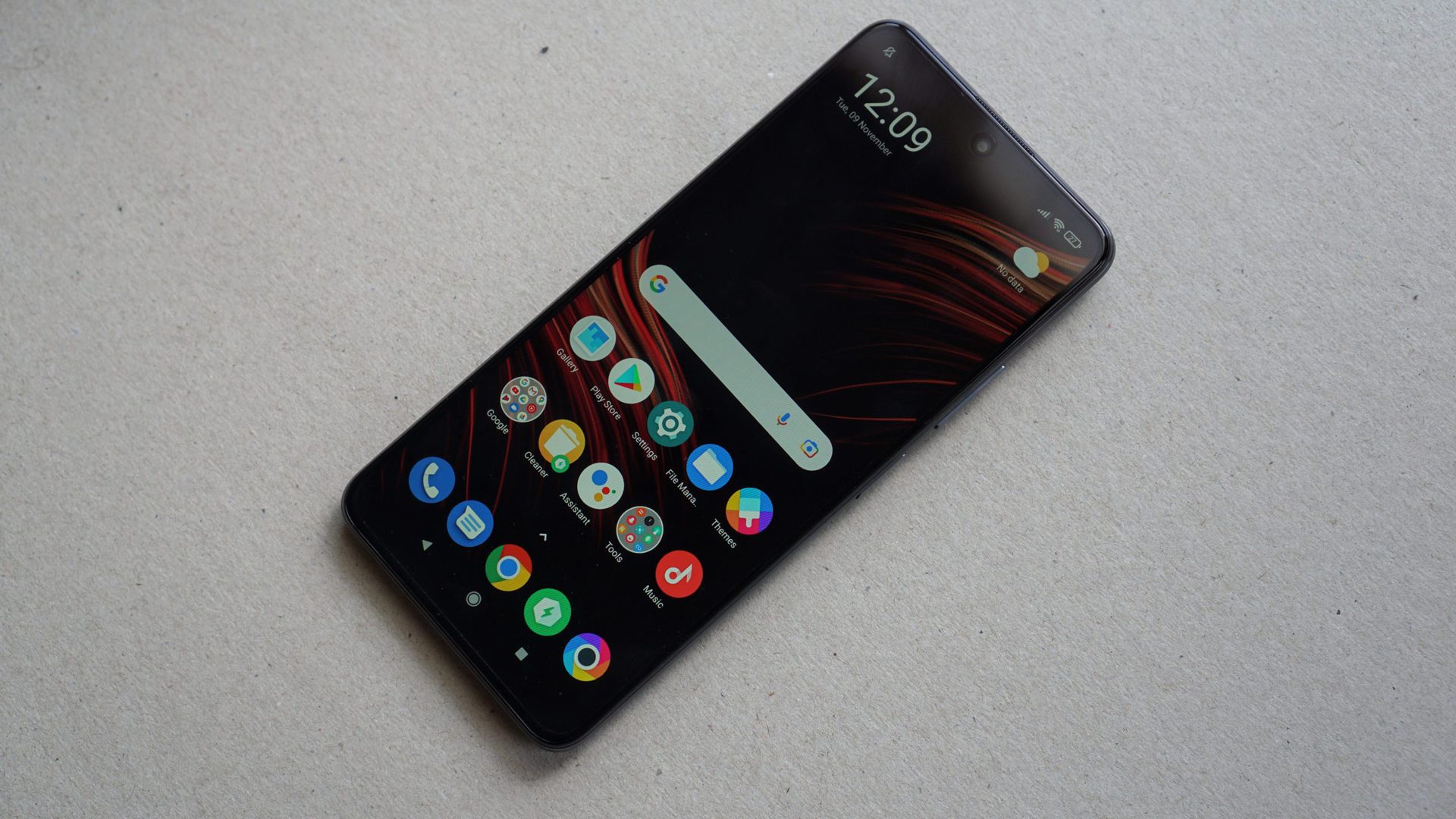
While performance overall is more than suitable for a budget phone, I did encounter issues with how the phone handles RAM management. Apps would sometimes reload with only three to five apps running in the background. It really makes you wonder why the company is advertising extended RAM (using storage as virtual memory of sorts) as a feature when the phone is so keen to kill background tasks.
Staying with the software side of things, there’s a little too much bloatware. There were five pre-installed games on our POCO M4 Pro review unit (and a shortcut to download PUBG Mobile), as well as apps for Facebook and Netflix. Most of these apps can be uninstalled, although Facebook Services, Facebook App Installer, and Facebook App Manager can’t be uninstalled or disabled. Another downside is software support, as the company previously said it isn’t planning to deviate from two years of OS updates and three years of security patches. While that’s far from the worst level of support we see in this price tier, but it’s not on par with the likes of Samsung, which offers three years of version upgrades and four years of security on many of its budget phones.
The POCO M4 Pro does have some downsides too, such as a dim display, disappointing ultra-wide camera, and some bloatware.
Another area where budget phones typically falter is low-light camera performance and the POCO device is certainly no exception. The POCO M4 Pro sacrifices brightness in a bid to hide noise. This strategy isn’t successful though, as there’s still a ton of noise to be had without pixel-peeping. This isn’t a surprise when you consider that its 50MP camera sensor has much smaller pixels than many 48MP sensors. Check out the sample below.

The POCO M4 Pro’s ultra-wide shooter is also a paint-by-numbers affair. The 8MP snapper is your standard budget ultra-wide camera today, which means it lacks autofocus (so macro shots are a no-go) and can be pretty soft in the corners. It delivers noticeably more saturated shots than the main camera too. Furthermore, features like night mode and even 1080p/60fps recording aren’t available on the ultra-wide snapper. We’re still glad this camera is here, as it gives you more flexibility, but it’s definitely a step or two below the main shooter.
Finally, the phone’s 6.6-inch 90Hz FHD+ LCD screen is solid for the price but could do with a significant brightness boost (with typical brightness rated at 450 nits). It’s not great in broad daylight, even with the sunlight mode enabled. It’s perfectly fine for indoor viewing though, but even then, the brightness suffers quite a bit when not looking at it straight-on. The panel isn’t awful overall for €229, but it’s not a selling point and you can find better screens out there for the price.
POCO M4 Pro camera samples
POCO M4 Pro specs
| POCO M4 Pro | |
|---|---|
Display | 6.6-inch IPS LCD 1,080 x 2,400 90Hz refresh rate 20:9 aspect ratio Gorilla Glass 3 |
Chipset | Dimensity 810 2 x 2.4GHz Cortex-A76 6 x 1.8GHz Cortex-A55 Mali-G57 MC2 graphics |
RAM/Storage | 4GB/64GB 6GB/128GB LPDDR4X RAM UFS 2.2 storage microSD expansion |
Camera | Rear: 50MP main (Samsung JN1), f/1.8, 0.64-micron pixel size, 1/2.76-inch sensor size, PDAF 8MP ultra-wide, f/2.2, 119-degree FoV Full HD videos at 30/60fps, and slo-mo at 720p/120fps, 720p video at 30fps Front: 16MP, f/2.5, Full HD video at 30fps |
Battery | 5,000mAh 33W charging USB-C |
Biometrics | Side-mounted capacitive fingerprint scanner Camera-based face unlock |
Headphone jack | Yes |
Software | MIUI 12.5 for POCO Android 11 |
Connectivity | Sub-6Ghz 5G 5G+5G Dual-SIM Wi-Fi 5 Bluetooth 5.1 NFC |
Dimensions and weight | 163.6 x 75.8 x 8.8mm 195g |
Colors | Power Black Cool Blue POCO Yellow |
POCO M4 Pro review: Should I buy it?
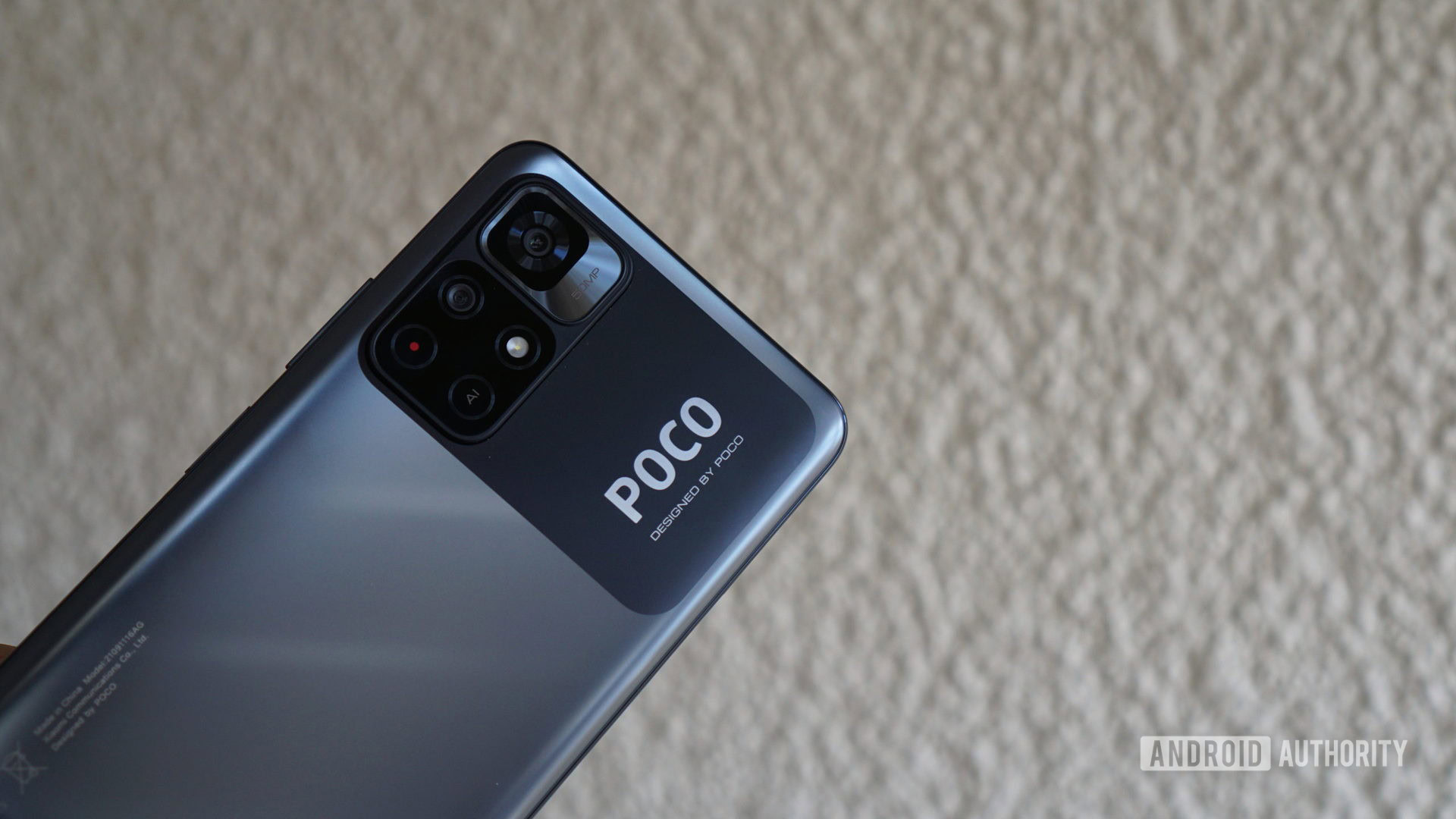
The POCO M4 Pro makes a good case for being your next purchase if you’ve been looking for a well-rounded budget phone that won’t let you down. A neat, durable design for the price, great battery life, 5G connectivity (sub-6Ghz only, but that’s not an issue considering it’s so cheap and not hitting the US), good daytime snaps from the 50MP lens, and a customizable Android skin all make it worth a look.
It’s not without some faults, though. The ultra-wide camera lacks color consistency and features compared to the main camera, the screen could be brighter, there’s too much bloatware, and multitasking can suffer despite POCO touting virtual RAM capabilities. You also get what you pay for in the performance and low-light photography categories, though neither let the phone down.
The POCO M4 Pro is a strong budget 5G proposition that takes the fight to offerings from rival brands.
The POCO M4 Pro stacks up well compared to the likes of the Galaxy A32 5G (€259), Galaxy A22 5G (€229), and the OnePlus Nord CE (€329). The latter in particular is significantly more expensive but brings welcome features like an OLED panel, a faster charging time, and a beefier processor (although battery capacity does suffer). Meanwhile, the Samsung phones’ wider geographic footprint is offset by simply not offering the same bang for your buck. Samsung generally offers better update support too.
Xiaomi’s own product line-up also has a few major challengers. The Redmi Note 10 (€200) lacks 5G connectivity but brings a similarly flexible rear camera system, an OLED screen (albeit at 60Hz), and the same battery and charging specs. Then there’s the recently released Redmi 10 (€180). It lacks grunt compared to the POCO M4 Pro, as well as 5G and 33W charging, but you’re still getting features like a 90Hz LCD panel, 5,000mAh battery, a 50MP main camera, 8MP ultra-wide lens, and NFC.
The POCO M4 Pro is a strong budget 5G proposition that takes the fight to offerings from rival brands. Those looking for a measure of future-proofing in terms of connectivity should definitely give this a look. Don’t care for 5G? Then that’s what the Redmi Note 10 is for.
